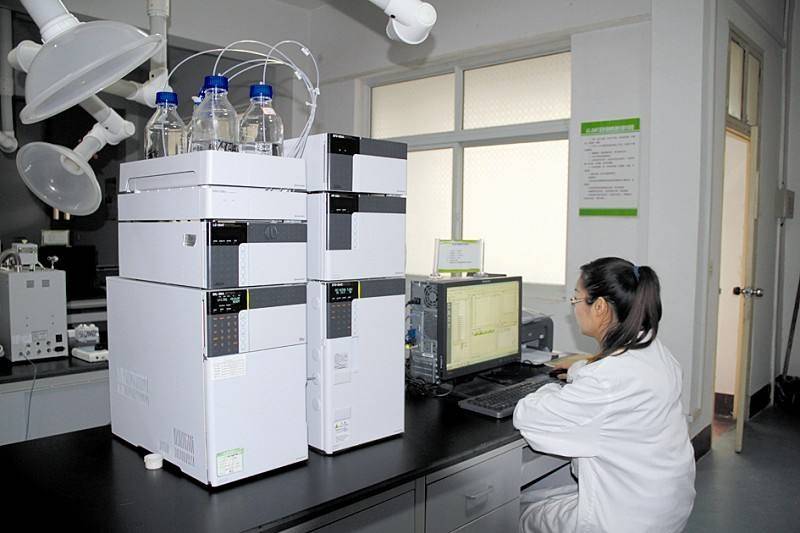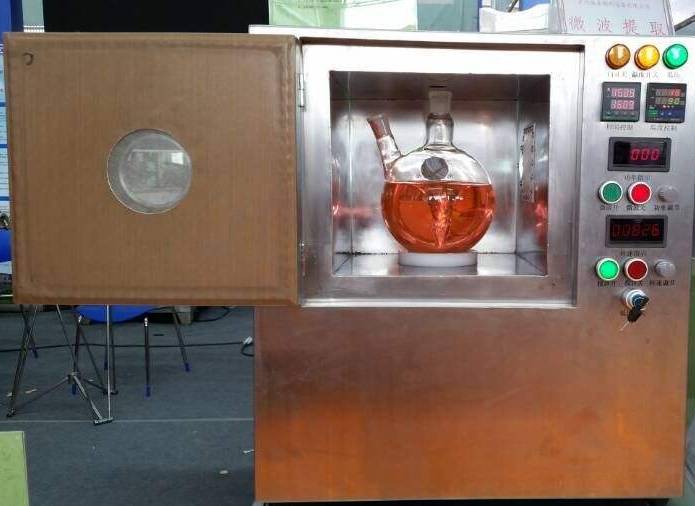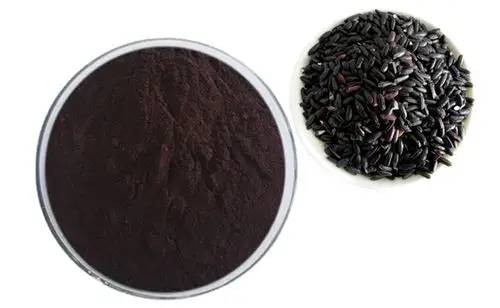흑미 추출물의 성분은 무엇인가요?
Black rice is a special type of rice that is rich in nutrients, including various trace elements and anthocyanins. According to the Compendium of Materia Medica, black rice has the effects of nourishing the yin and the kidneys, strengthening the spleen and warming the liver, improving eyesight and promoting blood circulation. In folk culture, black rice has the reputation of being a “precious tribute rice” and “medicine rice” [1]. Modern research has proven that black rice has various biological activities such as anti-oxidation, anti-inflammation, and prevention of cardiovascular and cerebrovascular diseases [2].
이러한 생물학적 기능 활성은 흑미에 함유된 색소 성분과 밀접한 관련이 있다.한편 사람들이 건강에 대한 관심이 많아지면서 사람들이 자주 먹는 흑미와 그 속에 들어있는 색소 역시 연구자들의 주목을 받았다.현재 흑미 추출물 성분 규명, 추출공정, 분리 및 정제, 안정성 등에 대한 연구가 점점 더 많아지고 있다.따라서 본 논문에서는 흑미 색소의 특성에 대한 종합적인 이해를 도모하고 식품 및 건강식품 분야에서 흑미 개발 및 심층가공에 관한 연구를 도모하고자 흑미 색소의 조성분석, 추출 및 분리 및 정제과정, 안정성 등에 관한 연구를 검토하였다.
흑미 추출물의 성분에 대한 분리, 식별 및 결정방법 1
1.1 흑미 추출물의 성분 분리 및 규명
…의 주성분흑미 추출물 (black rice extract)은 안 토시아 닌이다.안토시아닌은 열, 빛 그리고 다른 조건들에 불안정하기 때문에, 또한 그것의 분리와 식별을 더 어렵게 만듭니다.현재 흑미 추출물 성분 규명을 위해 가장 널리 사용되는 방법은 액체크로마토그래피-tandem 질량분석법이다.
선우주안 등은 적외선분광법과 고성능 액체크로마토그래피 탠뎀 질량분석기를 이용하여 흑미 추출물의 초음파 추출물에서 색소 성분을 분리 및 확인하였다.분리된 물질의 1차 및 2차 질량스펙트럼에 따라 추출물에는 두 가지 안토시아닌 성분인 cyanidin-3-glucoside와 peonidin-3-glucoside 가 각각 15.20%와 39.60%로 함유되어 있음을 확인하였다 [3].Park 등은 흑미 추출물을 연구대상으로 하여 고기능성 액체크로마토그래피와 자외선가시광선광도법을 이용하여 흑미의 색소 성분을 확인한 결과 cyanidin-3-glucoside, anthocyanin-3-glucoside, malvinidin-3-glucoside, geraniol-3-glucoside, delphinidin-3-glucoside로 나타났으며, 그 중 centaureidin-3-glucoside의 함량이 상대함량 기준으로 95%를 차지하여 가장 높았다 [4].
Mikihlemori 등은 흑미의 색소 성분을 확인하기 위하여 고성능 액체크로마토그래피-포토다이오드 배열 검출법 및 전기분무 질량분석법을 이용하였으며, 주요 성분이 cyanidin-3-glucoside와 cyanidin-3-galactoside 이며, 각각 91.13%, 4.74%의 상대성분임을 증명하였다 [5].Zhang Mingwei 등은 흑미로부터 malvin, pelargonidin 3,5-diglucoside, cyanidin 3-glucoside 및 cyanidin 3,5-diglucoside 등 4가지 안토시아닌을 분리, 정제하여 확인하였다.그 중 제라늄-3, 5-디글루코사이드와 콘플라워-3, 5-디글루코사이드는 이전 세대에서 밝혀지지 않은 성분이다 [6].

요약하면 흑미의 색소 조성은 다양한 안토시아닌 성분으로 구성되어 있다.연구진이 확인한 성분은 콘플라워-3-글루코사이드이며,이 역시 함량이 가장 높은 성분이다.
흑미 추출물 결정법 1.2
Currently, the main methods for determining black rice extract include spectrophotometry, high-performance liquid chromatography, and liquid chromatography-mass spectrometry tandem methods. The advantage of the liquid chromatography-mass spectrometry tandem method is in separation and identification, with many advantages such as high efficiency, speed, and sensitivity. However, the equipment used in this method is more expensive, and the technical requirements for operation and maintenance are higher. Liquid chromatography and spectrophotometry are more suitable for ordinary enterprises and other institutions.
Ying Longbin 등은 cyanidin-3-glucoside를 표준물질로 사용하여 고성능 액체크로마토그래피에 의한 흑미 중의 안토시아닌 물질의 검출방법을 확립하였다.검출파장은 275 nm로 확인되었으며, 이동상은 구배 형태로 용출된 메탄올과 물 (1% 포름산 함유) 이었다.이 방법은 안토시아닌 질량농도 0.0052~0.052 mg/mL 범위에서 선형성 (R=0.9998)이 양호하며, 평균 회수율 99.72%, RSD 0.9100, 최소 검출한계 0.1 ng/mL [7]이다.
As early as 1982, Osawa used the pH difference method to determine the anthocyanin content in food. Using cyanidin-3-glucoside as the reference substance, he established a method for determining anthocyanin using the fact that the structural transformation of anthocyanin components under different pH conditions is a function of pH, and the absorbance values are different at the same wavelength [8]. Zhou Shukun et al. used this method to determine the pigment content of black rice. Using cyanidin-3-glucoside as the reference substance, they measured the maximum absorbance of black rice extract solutions at pH 1.0 and 4.5, and calculated the pigment concentration of black rice based on the molecular weight and extinction coefficient of cyanidin-3-glucoside[9].
흑미 추출물의 추출 및 정제 과정 중 연구자들은 간단하고 신속한 측정 방법을 선호합니다.Zhang Yinliang, Guo Mei, Wu Suping 등은 분광광도계를 이용하여 흑미 색소의 추출율을 확인하였다.시료 추출물을 적절히 희석한 후 최대 흡수 파장에서 흡광도를 측정하였고, 흡광도 값을 이용하여 추출 또는 정제 결과를 평가하였다 [10-12].
흑미 추출물의 안정성 2
안토시아닌 성분의 안정성은 빛, 온도, 산화제 등의 요인에 영향을 받기 쉽다.안토시아닌은 온도에 민감하며 장기간 가열하면 무색의 찰코논구조를 형성하고 퇴색하게 된다.안토시아닌은 강한 빛 조사에 의해 바닥 상태에서 들뜬 상태로 전환될 수 있어 [13] 분해 반응을 일으키기 더 쉽다.현재 흑미 추출물의 성분은 안토시아닌 성분으로 확인되었다.때문에 연구자들은 빛과 열 등 조건하에서의 흑미 안토시아닌의 안정성을 연구하여 흑미 색소의 저장 및 응용조건을 명확히 하였다.
열과 빛이 흑미 추출물의 안정성에 미치는 영향 2.1
Jiang Xinlong used isolated and purified black rice pigment extract as the object of study, and proved that the thermal and photodegradation of black rice anthocyanin both conformed to the first-order reaction kinetic equation [13]. Ji Yunqi et al. heated black rice pigment solutions to 70 °C and 100 °C, respectively, for 30 minutes, and found that the absorbance at 510 nm decreased by 7.2% and 20%, respectively [14]. This proves that the higher the temperature and the longer the heating time, the faster the thermal degradation of black rice anthocyanin. Black rice anthocyanin was placed under constant temperature conditions of 24°C and a pH of 3.0, and then exposed to natural indoor light (average light intensity 10001x), strong sunlight (average light intensity 450001x), and dark conditions for 10 days. The degradation rates were 0.01184/h, 0.01639/h and 0.0035/h, with half-lives of 58.54, 42.29 and 197.80 h, respectively [13]. It can be seen that black rice pigment is relatively poor in heat and light resistance, and that low temperatures and dark conditions are conducive to its preservation.
초음파장이 흑미 추출물의 안정성에 미치는 영향 2.2
조우근 등은 초음파가 흑미 추출물의 안정성에 미치는 영향을 연구하였다.초기농도, pH, 초음파주파수, 초음파파워 및 반응온도가 흑미 색소의 분해에 미치는 영향을 살펴보았다.반응운동분석을 통하여 초음파와 비초음파 환경에서 흑미색소의 화학반응은 모두 1차반응법칙에 부합되였다.초음파장에서 활성화에너지는 37697.94 kJ/mol, 전지수인자는 3800.55 s-1 이었다.초음파가 아닌 환경에서 활성화 에너지는 39531.41 kJ/mol, 전인자는 2887.07 s-1이다.비교 결과 초음파는 활성화 에너지를 줄이고 유효분자 충돌횟수를 증가시켜 분해반응이 더 잘 일어나게 하는 것으로 나타났다.초음파 영역에서 흑미 색소의 유효분자 충돌 횟수가 증가하고, 활성화 에너지가 감소하여 반응이 더 잘 일어나는 것을 알 수 있다 [9].

산도와 알칼리도가 색소 안정성에 미치는 영향 2.3
Black rice extract shows different colors in different acid-base solutions, and its stability is also different, which is consistent with the nature of anthocyanins. When the pH of the black rice pigment solution is < 4, the pigment is red; when the pH of the black rice pigment solution is 5 to 7, the black rice pigment is purple. Zeng Huiqin and others have demonstrated that under acidic conditions and at a temperature of 40°C, black rice pigment is stable to vitamin C, low concentrations of preservatives and different metal ions Na1+, Mg2+, Ca2+, and Zn2+. Under alkaline conditions, relatively long periods of high temperatures, oxidants such as H2O2, metal Fe3+ ions, high concentrations of benzoic acid, and ultraviolet light all affect the stability of black rice pigment [15].
금속 이온에 영향을 미치는 요인 2.4
Mila 등의 연구에 따르면 금속 이온이 흑미 안료에 선택적으로 발색 강화 효과가 있는 것으로 나타났다.Zn2+ 또는 Mg2+ 가 용액에 존재할 때 용액은 적색;Fe2+ 가 있을 때 용액은 검은 보라색을 띤다;Ca2+ 가 있을 때 용액은 검붉은 색이다;그리고 Al3+ 가 있을 때 용액은 보라색이다.안료에 대한 금속이온의 색증강 효과는 이온의 가수분해 및 안료와 금속이온의 킬레이션과 관련이 있다.그 메커니즘은 더 조사가 필요하다.
흑미 추출물의 추출 및 정제 기술 3
3.1 용매 추출
용매추출기술은 가장 널리 사용되고 있는 천연물 추출기술 중의 하나이다.이 방법은 주로 원료 중 목표성분의 화학적 특성과 like 용해의 원리에 근거하여 적절한 추출용매를 선정하고, 가능한 한 비목표성분의 해체를 피한다.일반적으로 사용되는 추출 방법에는 maceration, decoction, reflux 가 있습니다.흑미 추출물의 추출은 대부분 마테레이션에 의해 수행되며, 적절한 pH의 에탄올 용액이 추출용매로 대부분 사용된다.우서핑 등은 maceration 법에 의한 흑미 안토시아닌 추출에 도움이 되는 에탄올을 용매로 사용하였다.최적의 추출 조건, 즉, 50% 에탄올, 갈이도 50 mesh, 액체와 재료 비율 1:5, 교반 시간 30분, 교반 온도 80°C, pH 3 [12]을 얻었다.구오미 등은 에탄올을 용매로 사용하고 추출법을 적용하여 흑미 안토시아닌을 추출하였다.단일인자 실험과 직교실험을 통하여 흑미 색소의 추출율에 영향을 미치는 주요 인자를 규명하였다:추출시간>액체 대 물질 비율>추출 온도>추출 pH. 최적 추출 공정 조건은 95% 에탄올, 액상 대 재료비 1:45 (g:mL), 추출 pH 3.0, 추출 온도 80°C, 추출 시간 90분 [11] 이었다.
3.2초음파 추출
초음파추출기술은 초음파의"캐비테이션효과", 기계적효과, 열적효과를 이용하여 유효성분의 확산과 방출을 가속화하고 목표성분의 추출을 달성한다.이 방법은 플라보노이드, 폴리페놀 및 기타 유효성분 등 다양한 천연물 추출에 적용되고 있다.이 방법은 낮은 추출 온도, 높은 효율 및 짧은 시간의 장점이 있습니다.
Zhang Jixiang et al. used an ultrasound-assisted extraction method to extract anthocyanin from black rice. The optimal process conditions were determined: ethanol concentration 80%, ultrasound time 50 min, liquid-to-material ratio 1:32, ultrasound power 250 W, and the optimal extraction rate was 4.5%. This is nearly three times higher than the extraction rate of the traditional Soxhlet extraction method [17]. Zhang Zhihui et al. used ultrasound to assist in the extraction of anthocyanin from black rice. The optimal conditions were determined using the anthocyanin content, DPPH free radical scavenging rate, and total antioxidant capacity as evaluation indicators: ultrasonic power 280W, extraction time 20min, ethanol concentration 70%, solid-liquid ratio (mg/mL) 1:20, temperature 50℃, under these conditions the anthocyanin extraction rate was 12.56mg/g, DPPH free radical scavenging rate was 54.41%, and TAC was 52.38 u/mL [18].
3.3 마이크로파 추출법
마이크로파 추출 기술은 마이크로파 복사의 에너지를 이용해 추출 용매를 가열하는 한편, 시료에서 용매 속으로 목표 성분이 확산, 용해되도록 한다.이 방법은 균일 한 가열, 좋은 선택성, 용매 절약, 간단한 조작, 좋은 재현성, 에너지 절약 및 환경 보호의 장점을 가지고 있습니다.최근년간 마이크로파추출기술은 천연물로부터 유효성분을 추출하는데 널리 사용되고있으며 일정한 장점도 보여주었다.
마핑 등은 흑미 추출물의 마이크로파 보조 추출 공정을 최적화했다.2 요인 2 수준 직교설계를 이용한 실험결과, 에탄올 농도와 액체 대 물질 비율이 추출율에 유의한 영향을 미치는 것으로 나타났다.
최적 추출조건은 에탄올 농도 80%, 액상 대 물질 비율 1:18 (m:V), 마이크로웨이브 추출시간 94s, 흑미 안토시아닌 수율 4.97%로 결정되었다 [19].왕후이는 흑미 안토시아닌 추출물의 흡광도 값을 평가지표로 이용하여 흑미 색소 성분의 마이크로파를 이용한 추출을 연구하였다.그 결과 실험 범위 내에서 마이크로파 파워, 액비 대 물질 비율, 에탄올 농도가 흑미 안토시아닌 추출물의 흡광도에 강한 영향을 미치는 것으로 나타났다.마이크로파 작용시간은 흑미 안토시아닌 추출물의 흡광도에 약한 영향을 미쳤으며, 흑미 안토시아닌 추출율은 마이크로파 파워 및 액체 대 물질 비율과 양의 상관관계를, 에탄올 농도와는 음의 상관관계를 보였다 [20].
효소 가수분해 3.4
Enzymatic hydrolysis makes use of the properties of enzymes. The right enzyme can be selected to break down plant tissue under relatively mild conditions. Cellulase is often used to extract the active ingredients of natural products because it can break down plant cell walls and promote the dissolution of target components.
류영지 등은 cellulase를 이용하여 흑미강으로부터 안토시아닌을 추출하고, 단일인자 실험과 반응표면법을 통해 추출공정을 최적화하였다.최적화된 공정 조건은 효소 첨가량 2.0%, 효소 가수분해 온도 38.7°C, 효소 가수분해 시간 128.8min, 재료 대 액비 1:10, 추출 시간은 40분, 추출 온도는 50 °C, 에탄올 추출액 농도는 80% 였고, 이러한 조건에서 흑미쌀의 안토시아닌 추출율은 21.9 mg/g (이론값)에 도달할 수 있었다 [21].
흑미 추출물의 정제과정 연구 3.5
흑미 추출물에 대해 가장 많이 연구된 정제기술은 대증수지 분리 및 정제기술과 막분리기술이다.호우자오화는 흑미 안료의 정제를 위해 ADS-5, ADS-7, ADS-F8, ADS-17, NKA-9, AB-8, S-8, D4020 및 NKA 9 종류의 대성 흡착수지를 비교하였다.흡착 및 탈착 능력의 비교를 통해 AB-8대성 수지가 흑미 안토시아닌을 정제하는데 이상적인 수지임을 확인하였다.가장 적합한 정화 조건은 용출 용매 80% 에탄올, 시료 로딩 유속 1.0BV/h, 탈착 유속 2.0BV/h입니다.수지에 의한 정제 후 추출물의 안토시아닌 함량은 22.59%로 조미 추출물의 안토시아닌 함량 (3.448%)보다 높다 [22].한하오 등은 막분리기술을 이용해 흑미 안토시아닌을 정제했다.
먼저 분자량을 1000 kD로 컷오프한 세라믹막을 이용하여 흑미 추출물로부터 지용성 성분을 제거한 후 100D 나선상 나노여과막을 이용하여 탈지 추출물을 농축하였다.흑미 안토시아닌 농축액의 막분리 및 정제 막분리 및 정제로 얻은 농축액 중 건조물 함량은 6.46 g/100 mL, 전통적인 증발기술로 얻은 농축액 중 건조물 함량은 6.56 g/100 mL로 색도값은 각각 2.71, 1.93, 지방함량은 각각 0.30, 0.28 g/100 mL 이었다.막 분리 및 정화 기술이 흑미 안토시아닌의 순도와 품질을 향상시킬 수 있음을 알 수 있습니다.막분리 후에는 색가치의 손실이 없으며, 동시에 탈지 및 담수화 효과가 있어 막분리 기술이 흑미 안토시아닌 [23]의 정제에 사용될 수 있음을 증명하였다.
4 전망
흑미는 중국에서 귀한 쌀이며 흑미 추출물은 좋은 천연 식품 첨가물로 사람들이 가장 오래 섭취하는 식품인 음료수, 빵 등 다양한 건강 이로운 식품을 개발하는데 식품 재료, 식품 색소, 항산화 등으로 사용할 수 있다.등원희 등은 흑미 추출물 농축액을 원료로 자당, 구연산 등과 혼합하여 흑미 색소 음료 [24]를 개발하였다.그러나 현재 흑미 안토시아닌 추출물 및 정제제품의 활용이나 색소 추출 후 잔여물의 지속적 사용에 대한 연구는 거의 없는 실정이다.이 두 가지 문제를 더 잘 해결할 수 있다면 흑미 추출물의 활용과 흑미의 추가 가공은 더욱 발전할 것이다.
참조:
민준. 흑미 (黑米)의 영양학적 특성.후난 농업. 2013(9):41.
[2] 야오슐롱.흑미 안토시아닌 성분이 콜레스테롤 흡수에 미치는 영향 및 기전 연구 [D.동두천대학교 교육대학원 석사학위논문 2014.
선우주안 (Sun Wujuan), 진링샤 (Jin Lingxia), 자오카이빈 (Zhao Caibin) 외.흑미 안료의 조성 및 구조분석을 위한 고성능 액체크로마토그래피 탠덤질량분석기 (High performance liquid chromatography-tandem mass spectrometry for the composition and structural analysis of black rice pigments)Physical and Chemical Inspection-Chemical Edition. 2012, 48(9):1023-1026.
흑미 (Heugjinjubyeo) 로부터 anthocyanin의 분리 및 항산화 활성 선별 (Park Y S, Kim S J, Chang H I.)Korean Journal of Microbiology and Biotechnology. 2008, 36(1):55-60.
[5]Mikihlemori,Eunmikoh,Alysone M. 조리가 흑미 (Oryza sativa L.japonica var.SBR)의 안토시아닌에 미치는 영향 [J.한국농식품화학학회지 2009년,57 (5):1908-1914.
장밍웨이, 궈바오장, 장루이펜 등.흑미 (黑米)의 항산화 활성 성분의 분리, 정제 및 구조 규명-중국농학, 2006, 39(1):153-160.
[7] 잉롱빈, 유상강, 류큐평 외.고성능액체크로마토그래피에 의한 흑미의 안토시아닌 성분 측정 (J.항주사범대학교 논문집 (자연과학편) 2012, 11(1):28-32.
[8] 식용색으로서 오사와 Y. 안토시아닌 [M.서울:학문사, 1982.85-85다.
[9] 저우스크, Cao YP, Huang ZH.초음파장에서 흑미 색소의 안정성에 관한 연구 (J.중국식품첨가물, 2015(3):71-76.
[10] 장인량, 저우원춘, 정장경 외.초음파를 이용한 흑미로부터 안토시아닌의 추출과 항산화성에 관한 연구 (J.정저우경공업대학 (자연과학편), 2013, 28(1):16-20.
[11] 구메이, 시윤하.알코올 용해법에 의한 흑미 색소 추출과정에 관한 연구 (J.식품연구개발, 2015, 36(8):58-60.
[12] 우서핑.흑미 색소의 추출 및 안정성에 관한 연구 (J.Chinese Condiments, 2011, 36(12):106-110.
[13] 장신롱.흑미 anthocyanins의 분해특성에 관한 연구.Chinese Journal of Cereals, Oils and Foodstuffs, 2013, 28(4):27-31.
[14] Ji Y Q, Xu C Y, Zhang S P. 흑미 색소의 추출공정 최적화 및 안정성에 관한 연구 (J.곡물가공, 2012, 37(2):33-35.
Zeng H Q, Zhang Y M, Jin H. 흑미 안료의 안정성에 관한 연구 (J.식품연구개발, 2014, 35(19):17-20.
[16] 미, L., 수, H.,리, J. 외.흑미 anthocyanin의 추출과 안정성.『 내몽골농업대학 』, 2011, 32(2):263-265.
[17] Zhang, J., Zhao, W., Bai, X. 외.직교시험법에 의한 흑미로부터 흑색색소의 초음파 보조 추출 최적화.식품과학, 2010, 31(4):39-41.
[18] 장지희, 유귀평.흑미로부터 초음파를 이용한 항산화 물질 추출 [J.식품산업과학기술, 2001(12):338-342.
[19] 마핑, 궈시후안, 궈젠왕.흑미로부터 멜라닌의 마이크로파 보조 추출공정의 최적화.식품과 기계, 2014, 30(5):229-231.
[20] 왕휘.흑미로부터 전자파를 이용한 멜라닌 추출의 영향인자 연구.광동농학, 2013(7):92-94.
[21] 류영지, 류궈링, 황치열 외.반응표면방법론에 의한 흑미로부터 안토시아닌의 셀룰라제 보조추출 최적화에 관한 연구 (J.식품연구 개발, 2014, 35(10):24-27.
[22] 호우자오화, 자이허큐, 완장민.흑미 안토시아닌의 추출 및 정제 (J.식품학. 2010, 31(10):53-59.
[23] 한하오, 이신성, 장지언 외.흑미 안토시아닌 색소의 탈지 및 농도에 있어서 membrane 기술의 응용 (J.식품과학, 2012, 33(6):297-300.
[24] 등원희, 이신현, 우산교 외.흑미 색소 정제 및 스포츠 음료 제조 연구.식품공학, 2013, 38(6):109-113.


 영어
영어 프랑스
프랑스 스페인
스페인 러시아
러시아 한국
한국 일본
일본




